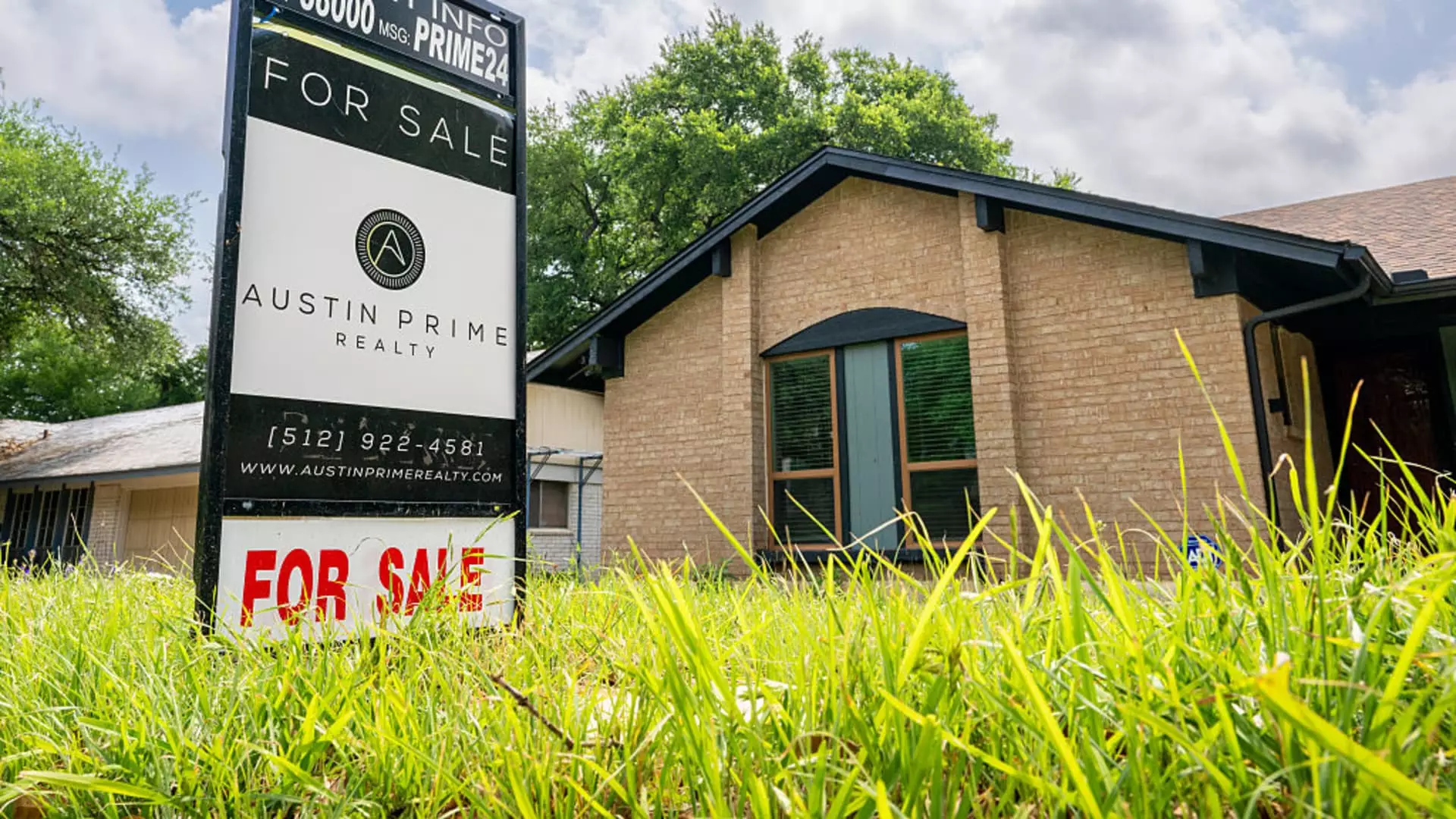In a landscape that often mirrors emotional highs and lows, the current state of mortgage interest rates feels less like an eagerly awaited climax and more like the drawn-out sigh of a weary marathon runner. Last week’s slight uptick, with the average contract interest rate for 30-year fixed-rate mortgages inching up to 6.93%, hardly registers on the scale of impactful changes. When juxtaposed against the historical backdrop, this movement is almost negligible. It now begs the question: is this truly an opportunity for potential homebuyers, or merely a flicker of hope in an otherwise stagnant market?
The Surge in Applications: A Facade?
Despite the stagnant rates, there was a noteworthy increase in mortgage application volume—a 12.5% week-over-week rise that seems to suggest a surge in demand. However, such statistics are often deceptive; they can mask a deeper malaise lurking beneath the surface. Yes, applications for refinancing saw a commendable increase of 16%, and home purchase applications climbed by 10%, but one must approach these figures with a critical lens. The obvious increase could simply reflect anxiousness rather than confidence. After all, the last year has witnessed profound economic headwinds that have influenced the broader housing market, including inflationary pressures and fluctuating Treasury rates, making this surge seem more reactionary than strategic.
Consumer Sentiment and Economic Realities
Joel Kan, vice president and deputy chief economist at the Mortgage Bankers Association, insists that buyers are seizing the moment presented by improved inventory. But how stable is this sentiment? As home prices appear to relent amid an uptick in available properties—31% higher compared to last year—one cannot dismiss the complexity of consumer psychology. The past few years have instilled a sense of fear among potential buyers; they may be rushing to take advantage of perceived bargains without fully understanding that economic clouds still loom larger than ever before.
The Bigger Picture: Waiting for Stability
With economic uncertainty hanging over the nation, such optimism is precarious. The upcoming inflation data release and ongoing trade tensions with China could act as pivotal points, swinging mortgage rates unpredictably. In that sense, today’s mild rise in applications feels like a football team celebrating a touchdown while the game clock still ticks down—a fleeting moment of excitement amid the knowledge that the final outcome remains uncertain.
Given these factors, while the increased applications may paint a picture of opportunity, they highlight a more complex interplay of human behavior, economic variables, and market dynamics. Buyers are venturing into a terrain fraught with instability. The current environment may be inadvertently encouraging them to make hasty decisions fueled by fear rather than well-informed strategies. Thus, while many hope for a turnaround, the reality may dictate a far less invigorating narrative. The mortgage market stands at a crossroads, and only clarity in broader economic trends will reveal if the current uptick is a path toward recovery or simply a momentary distraction from ongoing struggles.

